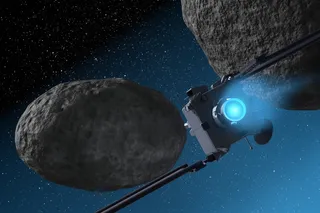A National Academy of Sciences panel, chaired by Helen Quinn, has released a new report that seeks to identify "the key scientific practices, concepts and ideas that all students should learn by the time they complete high school.” An ambitious undertaking, but a sensible one. At the very least, efforts like this serve to focus attention on what's important across a wide variety of K-12 curricula, and at best it could help prod schools (or states, really) across the country into teaching more coherent and useful science to kids. Here's the web page for the report, a summary (pdf), and the report itself (pdf, free after you register). So what are the core ideas of science? They are all listed in the summary report, and divided into three categories. The first category is "Scientific and Engineering Practices," and includes such laudable concepts as " Analyzing and interpreting data." The second ...
The Core Ideas of Science
Discover the key scientific practices students must learn by high school, enhancing their understanding of science concepts.
More on Discover
Stay Curious
SubscribeTo The Magazine
Save up to 40% off the cover price when you subscribe to Discover magazine.
Subscribe












